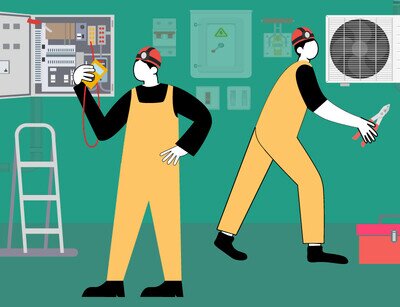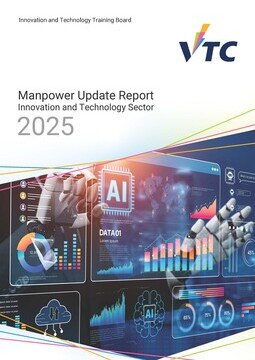Year 2023 Tooltips
FT Employees
0
0
0
0
Unskilled
0
Total
0
0
Vacancy rate: 0.0%
0
Vacancy rate: 0.2%
0
Vacancy rate: 0.0%
0
Vacancy rate: 0.2%
Unskilled
0
Vacancy rate: 0.0%
Total
0
Vacancy rate: 0.2%
All the percentages are rounded to nearest 0.1%.
0
0
0
0
Unskilled
0
Total
0
0
Turnover rate: 0.5%
0
Turnover rate: 5.9%
0
Turnover rate: 3.8%
0
Turnover rate: 4.7%
All the percentages are rounded to nearest 0.1%.
FT Employees
0
0
0
0
Total
0
0
Vacancy rate: 1.2%
0
Vacancy rate: 0.9%
0
Vacancy rate: 0.5%
0
Vacancy rate: 0.9%
Total
0
Vacancy rate: 0.9%
All the percentages are rounded to nearest 0.1%.
0
0
0
0
Total
0
0
Turnover rate: 3.1%
0
Turnover rate: 3.5%
0
Turnover rate: 2.6%
0
Turnover rate: 3.3%
All the percentages are rounded to nearest 0.1%.
Monthly Income Tooltips
All the percentages are rounded to nearest 0.1%.
Monthly Income Tooltips
All the percentages are rounded to nearest 0.1%.
Preferred Education Tooltips
All the percentages are rounded to nearest 0.1%.
All the percentages are rounded to nearest 0.1%.
Preferred Education Tooltips
All the percentages are rounded to nearest 0.1%.
All the percentages are rounded to nearest 0.1%.
Recruitment Difficulties
1st
Working conditions/remuneration package could not meet applicants' expectations
2nd
General labour shortage in Hong Kong
3rd
Applicants lacked the relevant experience and training
Recruitment Difficulties
1st
Applicants lacked the relevant experience and training
2nd
Working conditions/remuneration package could not meet applicants' expectations
3rd
General labour shortage in Hong Kong
Manpower Demand
Job Level
Technologist
Average Annual Growth
0
2023
Actual
0
2027
Forecast
0
Note(s):
(1) The figures referred to full-time employees and vacancies.
(2) The manpower forecast is based on the historical manpower survey data, together with the market trends in a longer term, technological developments of the industry and other social-economic determinants.
All the percentages are rounded to nearest 0.1%.
Technician
Average Annual Growth
0
2023
Actual
0
2027
Forecast
0
Note(s):
(1) The figures referred to full-time employees and vacancies.
(2) The manpower forecast is based on the historical manpower survey data, together with the market trends in a longer term, technological developments of the industry and other social-economic determinants.
All the percentages are rounded to nearest 0.1%.
Craftsman & Operative
Average Annual Growth
0
2023
Actual
0
2027
Forecast
0
Note(s):
(1) The figures referred to full-time employees and vacancies.
(2) The manpower forecast is based on the historical manpower survey data, together with the market trends in a longer term, technological developments of the industry and other social-economic determinants.
All the percentages are rounded to nearest 0.1%.
Manpower Demand
Job Level
Technologist
Average Annual Growth
0
2023
Actual
0
2027
Forecast
0
Note(s):
(1) The figures referred to full-time employees and vacancies.
(2) The manpower forecast is based on the historical manpower survey data, together with the market trends in a longer term, technological developments of the industry and other social-economic determinants.
All the percentages are rounded to nearest 0.1%.
Technician
Average Annual Growth
0
2023
Actual
0
2027
Forecast
0
Note(s):
(1) The figures referred to full-time employees and vacancies.
(2) The manpower forecast is based on the historical manpower survey data, together with the market trends in a longer term, technological developments of the industry and other social-economic determinants.
All the percentages are rounded to nearest 0.1%.
Craftsman & Operative
Average Annual Growth
0
2023
Actual
0
2027
Forecast
0
Note(s):
(1) The figures referred to full-time employees and vacancies.
(2) The manpower forecast is based on the historical manpower survey data, together with the market trends in a longer term, technological developments of the industry and other social-economic determinants.
All the percentages are rounded to nearest 0.1%.
Report

- Fashion and Textile
- 2023 Manpower Survey Report
Creativity Shines: A Blend of Technology, Tradition and Care for Sustainability
The future of the fashion and textile industry will be characterised by sustainability, digital transformation, and technology integration. The industry will prioritise sustainable and ethical production practices while embracing digital technologies and e-commerce platforms to expand market reach, improve operational efficiency, and drive sales. The Government's support for arts, culture, and creative industries will create opportunities for eastern and western cultural integration. To fuel further growth in the industry and position Hong Kong as a global hub for artistic expression and creativity, it is essential to attract young creative talents who can bring fresh ideas, innovation, and energy. Additionally, engaging retired experienced artisans can help preserve valuable traditional craftsmanship and inspire young professionals to combine traditional techniques with modern practices.

- Fashion and Textile
- 2023 Manpower Update Report
Regain Momentum under Normalisation
When the world gradually picks up its step to normality after the pandemic years, international fashion brands and manufacturers are eager to resume sales and production to prepare for the bounce back. Hong Kong as a global sourcing hub should have its practitioners well equipped for the digital technology application in design and production, consumers’ expectations on ESG, and e-commerce development that further drives the fashion and textile industry. The young generation who aspire to join the industry should also develop a global perspective and understand the Greater Bay Area for the opportunities of the huge market and demand for quality products.



























































